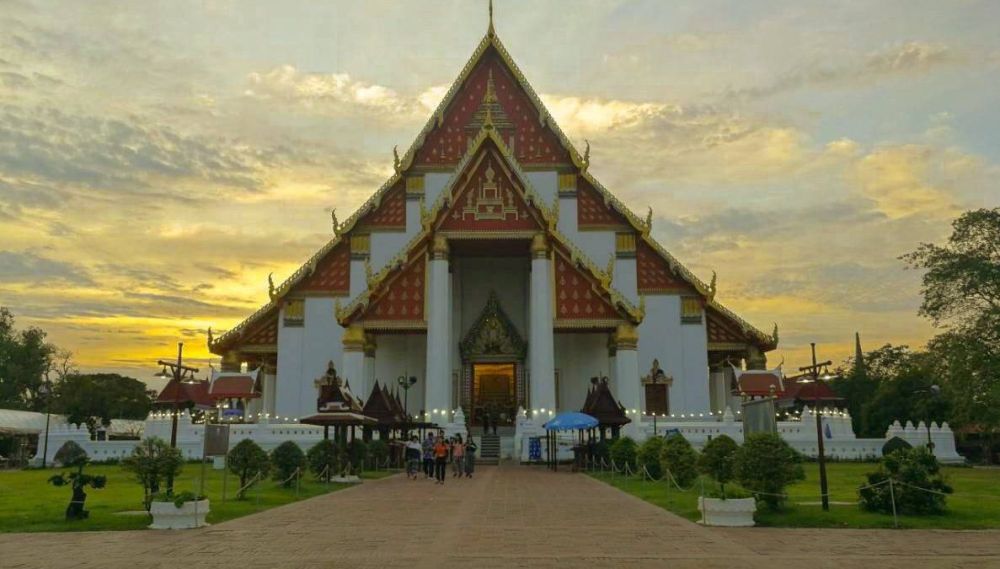

Wiharn Phra Mongkhon Bophit is a major historical and religious structure in Ayutthaya, Thailand, a city that was once the capital of the Kingdom of Siam. Established in the 14th century, Ayutthaya became one of the world's largest and most cosmopolitan urban areas and a center of global diplomacy and commerce. The city and the region are rich with temples and ruins, indicative of a vibrant culture that has spanned centuries.
The wiharn, or vihara, houses one of Thailand's largest bronze Buddha images, known as Phra Mongkhon Bophit. Historically, the Buddha image was originally enshrined outside the Grand Palace to the east but it was later transferred to its current location and covered with a mandapa, the remains of which were found in an excavation in 1956. Subsequent restorations throughout the years have maintained the structural integrity and awe-inspiring presence of the Buddha image and the wiharn itself.
Ayutthaya's introduction to tourism started earnestly in the 20th century when the site began receiving recognition for its historical and cultural significance. The Thai government made concerted efforts to preserve and promote Ayutthaya as a destination for history enthusiasts and spiritual seekers alike. The establishment of the Ayutthaya Historical Park in 1976 solidified the area's position as a magnet for cultural tourism.
Wiharn Phra Mongkhon Bophit, as a prominent structure within this area, became a pivotal attraction for local and international tourists. Efforts made towards renovating the temple structures and the installation of visitor facilities have facilitated tourism. In 1991, Ayutthaya was declared a UNESCO World Heritage Site, catalyzing an increased global interest in the historical cities of Thailand, particularly the aged and majestic structures of Ayutthaya and the revered Wiharn Phra Mongkhon Bophit.
In recent years, there has been a shift in the tourism approach towards more sustainable and responsible practices. This includes the provision of educational tours, increased support for local businesses, and efforts to protect and maintain the site's historical integrity. Tourists are encouraged to engage with the destination in more meaningful ways, learning about its history, significance, and impact on Thai culture.
Interactive technologies such as virtual reality tours and augmented reality apps are also being developed to enhance the visitor experience. These technological trends offer immersive narratives and digital recreations of lost structures, providing a deeper understanding of the ancient city and its former glory.
Ayutthaya, and indeed the Wiharn Phra Mongkhon Bophit, continues to see healthy tourism growth, with a focus on preserving the integrity of its sites while offering visitors an enriching historical and cultural experience.